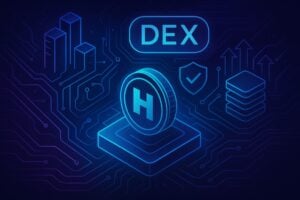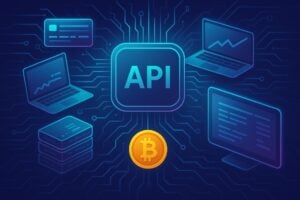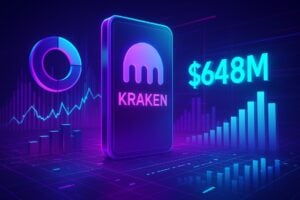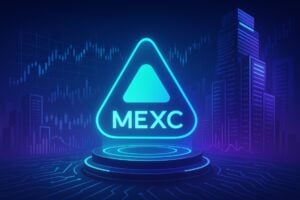This analysis examines the hyperliquid exchange, its Layer-1 blockchain, HYPE token, trading features, security record, and staking mechanics.
What is Hyperliquid exchange and what does it offer?
Overview of Hyperliquid decentralized exchange, Layer-1 blockchain, and HYPE token (hype token value)
Hyperliquid is presented as a Layer-1 decentralized exchange that combines an on-chain order book, perpetual markets and staking primitives with a native utility, the HYPE token.
The project was publicly discussed by founders including Jeff Yan, and the team published launch materials and an early community airdrop in 2024; see the airdrop and launch notes for specifics: HYPE airdrop and launch notes.
Developers position the protocol as trader-focused: low fees, single-click execution, and instrument variety (spot, margin, perpetuals). Market valuations cited by the project should be treated as provisional until independent data confirms them.
Treat initial token metrics and listed valuations as provisional until audited data is published.
Key trading features and performance metrics
Public materials claim direct deposits from over 30 chains, 1-click trading, and access to spot, margin and perpetual products with up to 50x leverage on selected markets.
The project has referenced daily volumes near $4 billion and roughly 300,000 users in early reports; those figures are available in reporting and platform notices but require third-party verification: market coverage and metrics.
Security and staking options
Staking launched at the end of 2024 with reported rewards just over 2%; staking is presented as both an economic incentive and a contributor to validation.
The team noted that core contributor allocations are subject to multi-year vesting to limit insider sell pressure. For the official staking announcement see: HYPE staking announcement.
In brief, Hyperliquid combines an on-chain order book, perpetual markets and staking on a bespoke Layer-1 while key metrics and valuations remain provisional and require independent verification.
How does the Layer-1 blockchain support Hyperliquid’s trading?
What consensus mechanism drives the Layer-1 and how fast are transactions? (hyperliquid consensus mechanism, hyperliquid transaction speed)
The project describes a custom consensus called Hyper BFT designed for low-latency finality and predictable block times.
Public claims cite a theoretical throughput target up to 200,000 transactions per second, but independent benchmarks and formal verification are not yet publicly available.
Engineers stress block-time regularity to reduce slippage on large orders; real-world throughput depends on network conditions and validator participation.
How does the Hyperliquid order book model interact with perpetual trading? (hyperliquid order book model, hyperliquid perpetual trading)
Unlike automated market makers, Hyperliquid implements an on-chain order book to support limit, market and conditional order types alongside perpetual contracts.
The on-chain order book aims to provide native settlement while retaining professional-grade order primitives familiar to traders on centralized venues.
Perpetuals use funding-rate mechanisms and margin controls; precise cadence, liquidation ladders and risk parameters are governed by published documents and live governance votes.
What are withdrawal options and staking rewards available on Hyperliquid? (hyperliquid withdrawal options, hyperliquid staking rewards)
Withdrawals settle on the Hyperliquid Layer-1 and the protocol currently optimizes outbound liquidity to USDC as the primary withdrawal currency, which can require an intermediate conversion for users holding other assets.
The platform published guidance on USDC withdrawals here: USDC withdrawal policy.
Staking rewards were announced at launch near 2%, but actual yields depend on trading-fee capture, staking participation and governance adjustments.
What risks and security considerations should users know?
Before engaging with new blockchain infrastructure, review independent security assessments and historical incident reports. Strong operational controls matter: past years show exploit patterns that platforms must mitigate.
In 2022 Chainalysis reported that “2022 was the biggest year ever for crypto hacking, with $3.8 billion stolen from cryptocurrency businesses,” underscoring persistent operational risk; see the Chainalysis analysis: Chainalysis report.
The Bank for International Settlements has similarly warned of structural risks tied to crypto asset markets and infrastructure, reinforcing the need for layered controls: BIS commentary.
What security measures protect user funds on Hyperliquid?
The team cites planned third-party audits, a bug-bounty program and multisig treasury controls as primary safeguards.
Non‑custodial on‑chain custody reduces counterparty risk but adds exposure to contract-level flaws and chain events. Users should prioritise audited modules and monitor upgrade proposals closely.
What are the main risks associated with using a DEX on a Layer-1 blockchain?
New Layer-1 DEXs inherit consensus-layer risks, smart-contract vulnerabilities, oracle failures and governance changes that can affect margin and liquidation mechanics.
In late 2024 the protocol reported heavy outflows during a market scare—public reporting referenced roughly $256 million withdrawn in about 30 hours and a near 25% drop in the token price—an event that stressed liquidity and sentiment but did not result in an on-chain exploit: market outflows report.
Where can users review withdrawal options and staking implications?
Consult the protocol documentation, governance forum and technical repositories for canonical rules on withdrawals and staking.
Testnets, block explorers and official audit reports are the best sources to validate operational claims before allocating material capital.
Maintain conservative position sizes and avoid migrating large balances based on social posts alone.
Hyperliquid presents a hybrid approach—an on-chain order book and Layer-1 designed for trading throughput, a community-focused HYPE token, and early staking mechanics.
The architecture answers several trader needs, but many quantitative claims require independent verification and audited reports. Traders and investors should follow published audits, governance proposals and on‑chain telemetry before scaling exposure.









